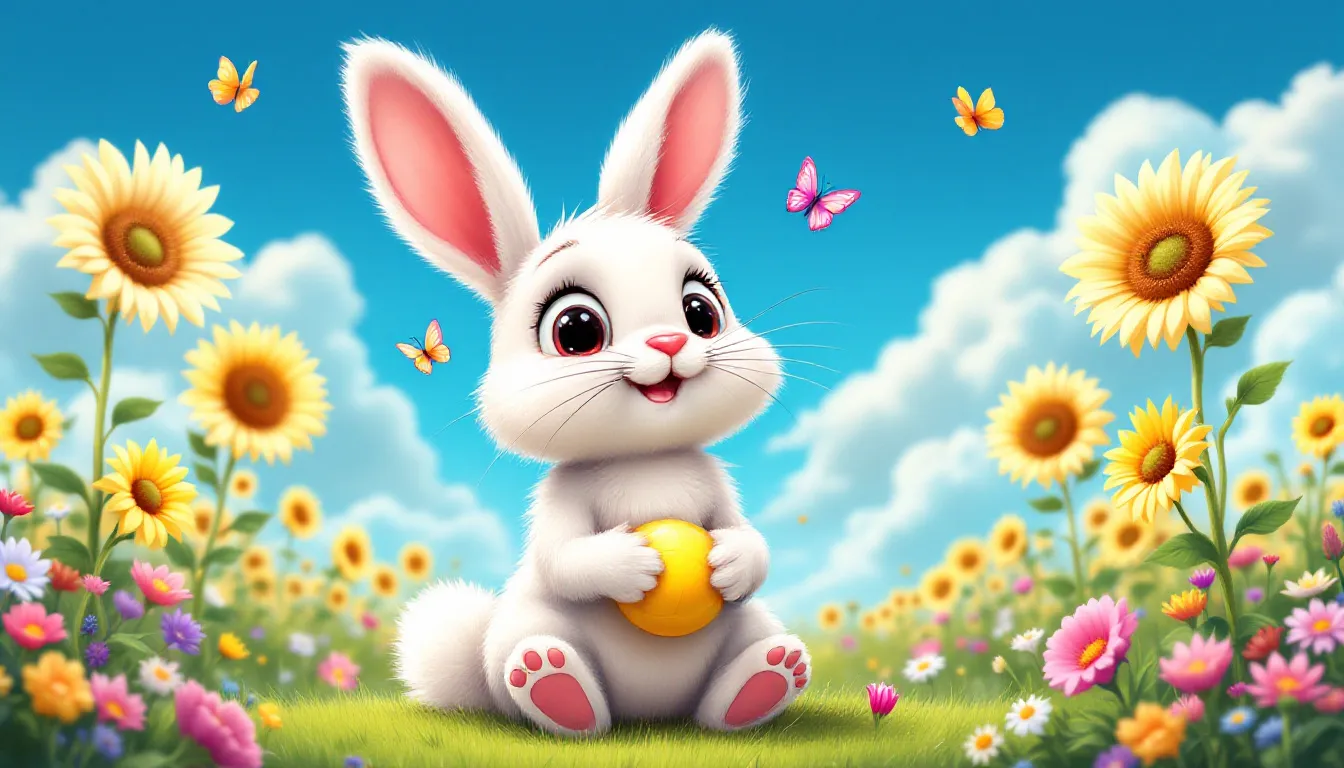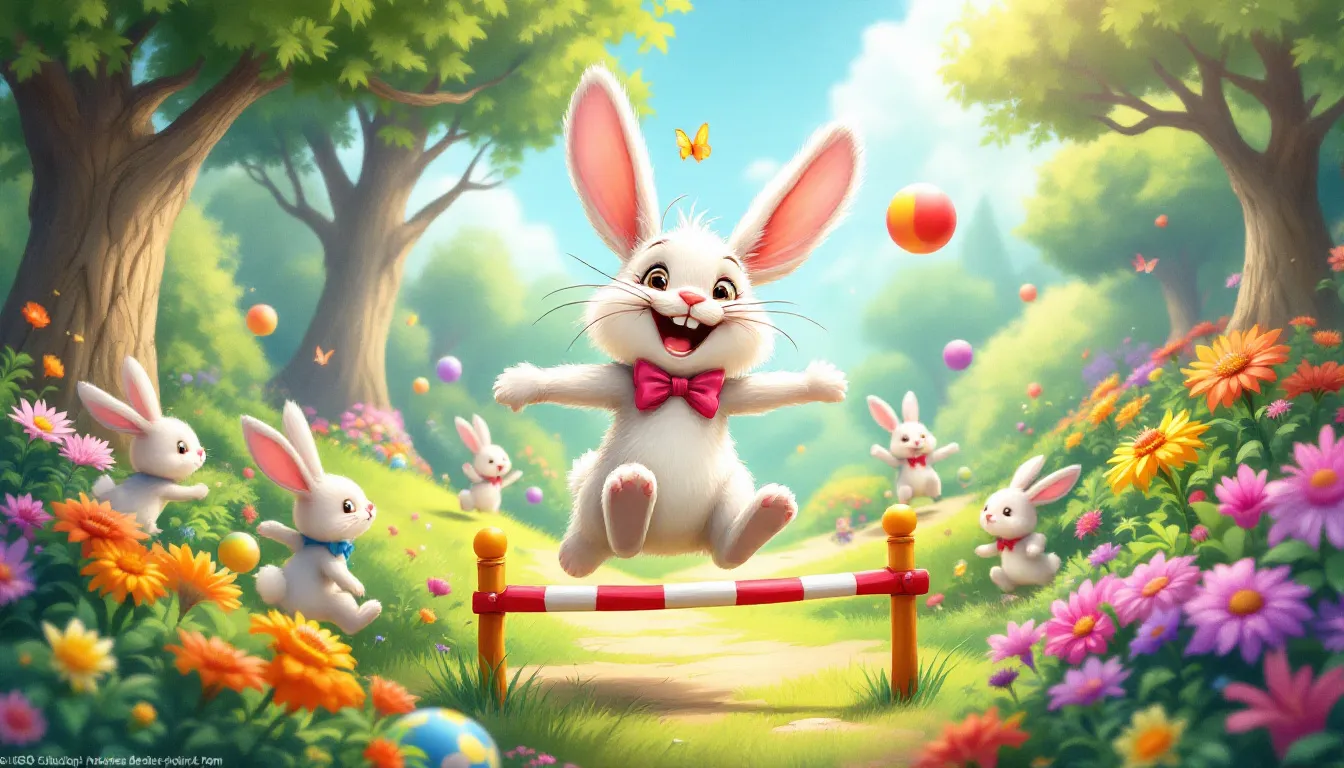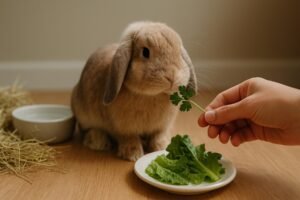How to keep a pet rabbit happy? Begin by understanding their physical and emotional needs. This guide covers essential tips like recognizing body language, creating a cozy living space, and providing a healthy diet, which is crucial for a rabbit’s overall well-being. Additionally, understanding the needs and emotions of house rabbits is vital to ensure their happiness and well-being. Learn how to make your rabbit’s life joyful and fulfilling.
Key Takeaways
-
Understand your rabbit’s body language to recognize their feelings and needs, fostering a strong bond.
-
Create a comfortable living space with ample room, cozy bedding, and safe hiding spots to ensure your rabbit feels secure.
-
Provide a balanced diet, regular exercise, social interaction, and stimulating toys to keep your rabbit happy and healthy.
Choosing the Right Pet Rabbit
Choosing the right pet rabbit can be a delightful yet challenging task, especially for first-time rabbit owners. With over 30 breeds of rabbits to choose from, it’s essential to consider factors such as size, temperament, and grooming needs. Popular breeds like the Dwarf Lop, Mini Lop, and Netherland Dwarf are often favored for their friendly nature and manageable size.
When selecting a pet rabbit, look for a healthy and active individual. A shiny coat, bright eyes, and a clean, dry nose are good indicators of a rabbit’s health. It’s also crucial to consider the rabbit’s age. Young rabbits require more attention and care compared to adult rabbits, so be prepared for the additional commitment if you choose a younger pet.
By carefully considering these factors, you can find a pet rabbit that fits well with your lifestyle and brings joy to your home.
Understanding Your Rabbit’s Body Language

One of the first steps in ensuring your pet rabbit is happy is learning to understand their body language. Rabbits, like all animals, have their own ways of communicating their feelings and needs. Recognizing these signs is key to fostering their well-being and creating a strong bond.
A happy bunny often exhibits behaviors such as binkies, which are joyful leaps and twists in the air. This playful behavior is a clear indicator of the rabbit’s happiness. Additionally, a relaxed posture and frequent nose twitching signify that your rabbit is content and comfortable in its environment.
New rabbit owners might need time to recognize these behaviors. But with patience and observation, you’ll soon be able to understand what makes your rabbit happy and excited, ensuring their happiness and well-being.
Create a Comfortable Living Space for House Rabbits
A comfortable living space is key to your rabbit’s happiness and health. Domestic rabbits need spacious enclosures that allow them to exercise and move freely. Ideally, the enclosure should be at least 3-4 times the rabbit’s length in length and 1-2 times in width. Rabbits must have access to an area of space that is at least 3m x 2m x 1m at all times. This ensures they have enough space to stretch, hop, and play. A spacious and comfortable living space is crucial for a rabbit’s happiness.
Provide a cozy sleeping area with ample bedding, allowing rabbits to sleep together or separately based on their preference. Outdoor rabbits need a sturdy, waterproof, and insulated shelter for weather protection. Shelters for rabbits should be insulated, and hazardous materials must be blocked from access.
Rabbits also need hiding spaces to feel secure. Provide one more hiding space than the number of house rabbits or other rabbits. Enrichment items such as tunnels and boxes can help prevent boredom and keep your rabbit engaged.
Place the rabbit’s home in a quiet, calm area of the house to foster a peaceful environment.
Keeping the Enclosure Clean
Keeping the enclosure clean is vital for your pet rabbit’s health. Regularly remove soiled bedding and clean food and water dishes to prevent the buildup of bacteria. Use a pet-safe cleaning solution to disinfect surfaces and replace bedding material, such as wood shavings or hay, completely every week. A clean enclosure not only prevents the spread of diseases but also ensures your rabbit remains happy and healthy in a fresh environment.
Provide a Balanced and Healthy Diet

A healthy diet is crucial for your rabbit’s happiness and health. High-quality hay, available at all times, is the cornerstone of a rabbit’s diet. About 80% of a rabbit’s daily diet should be grass-based hay. Hay aids in digestion and helps maintain dental health by wearing down their continuously growing teeth.
Fresh vegetables can be introduced gradually, ensuring they are safe and suitable for rabbits. A variety of vegetables should be eaten in moderation to provide dietary diversity. Rabbits should have access to fresh leafy greens every day. Adult rabbits need about 1/4 cup of pellets per 5 pounds of body weight.
Avoid feeding your rabbit too many sugary foods, including fruit and root vegetables, as these can lead to health problems. Certain foods like iceberg lettuce and potatoes should also be avoided as they can be harmful. Fresh fruits and vegetables should only be given in small amounts as treats for rabbits. A balanced diet ensures your rabbit remains healthy and content.
Respect Their Boundaries as Prey Animals
Rabbits are prey animals, and their natural instincts make them wary of being picked up and held. Most rabbits do not enjoy being held and may feel threatened when lifted off the ground. When held, some rabbits might freeze, a behavior known as ‘trancing’, which indicates distress. Handle rabbits gently and securely to prevent injury. Instead of forcing contact, wait for your rabbit to initiate interaction. This approach helps build trust and allows your rabbit to feel more comfortable and secure in your presence.
Companionship is also important for rabbits. Rabbits kept alone can feel socially isolated and may become bored, anxious, or destructive. In the wild, rabbits live together in large groups for warmth, comfort, protection, and companionship. Respecting their boundaries and understanding their social needs ensures your companion rabbit feels safe and happy.
Social Interaction and Companionship
Social creatures, rabbits thrive on companionship. They are happiest when they have at least one other rabbit to interact with. Social interactions among rabbits include mutual grooming, eating together, and sharing warmth. These behaviors help strengthen their bond and contribute to their overall well-being.
Social interactions significantly contribute to a rabbit’s happiness and overall well-being.
Young rabbits are generally easier to introduce to one another than older ones, making it worth considering age when getting companions, including female rabbits and male and female rabbits. However, bonding between rabbits can take time, sometimes months, and requires patience. Neutering both male and female rabbits before introduction can reduce aggressive behaviors, mitigate hormonal issues, and facilitate bonding. This also reduces the risk of reproductive cancers and improves their overall temperament.
Interactions with rabbits should be at ground level using a calm voice, allowing rabbits to feel more comfortable. Letting rabbits dictate the pace of interactions and honoring their personal space is crucial. Forcing a rabbit into uncomfortable situations can cause insecurity and affect their well-being.
Offer Safe and Healthy Toys

Before:
Safe and healthy toys are crucial for your rabbit’s mental and physical stimulation. Rabbits enjoy toys such as wooden chew toys, apple or willow sticks, and dried pinecones. Additionally, loofahs and woven hay-based toys are also great options for them. These toys help maintain their dental health by allowing them to chew, which is a natural behavior for rabbits.
After:
Safe and healthy toys are crucial for your rabbit’s mental and physical stimulation. Rabbits enjoy toys such as:
-
Wooden chew toys
-
Apple or willow sticks
-
Dried pinecones
-
Loofahs
-
Woven hay-based toys
These toys help maintain their dental health by allowing them to chew, which is a natural behavior for rabbits.
A variety of toys can keep rabbits occupied and prevent boredom. Cardboard boxes and tunnels can also be used for play and exploration. Regularly rotating toys keeps your rabbit engaged and excited.
Providing designated areas for play, such as cardboard boxes for digging, allows rabbits to express their natural behaviors without causing damage to your home. Offering a variety of safe and healthy toys keeps your rabbit happy and active.
Regular Exercise and Playtime

Exercise and playtime are crucial for your rabbit’s health and happiness. Exercise rabbits need a large exercise area that allows them to stay active. Their living space should enable them to sprint, stretch, and stand up fully without their ears touching the ceiling. Daily exercise is vital for rabbits’ health, and they need around three hours of free-roaming each day.
Exercise helps maintain joint health, prevents obesity, and provides mental stimulation. Providing various types of toys, such as cardboard boxes and tunnels, can enhance a rabbit’s playtime experience. Rabbits enjoy digging, so creating a designated digging spot, such as a box with shredded paper, can satisfy this instinct.
Setting up a playpen can provide a secure space for rabbits to run and explore. Supervise rabbits closely when they are out of their enclosure to prevent accidents and ensure safety.
Encouraging Natural Behaviors
Rabbits are prey animals and have natural behaviors that need to be encouraged. Providing opportunities for exercise, such as a bunny-sized obstacle course or a safe area for them to run around, is essential. Offer wooden chew toys to satisfy their natural instinct to chew and keep their teeth healthy. Encourage foraging behavior by hiding treats or toys around the enclosure. By promoting these natural behaviors, you’ll help keep your rabbit stimulated, engaged, and content.
Grooming and Health Checks
Grooming and health checks are vital for your rabbit’s well-being. Grooming helps prevent matted fur and keeps your rabbit clean. Monthly checks of your rabbit’s feet are needed to prevent sores from developing. Rabbits should be vaccinated yearly to protect against deadly diseases like calicivirus.
Daily cleaning of a rabbit’s living area helps maintain their health and prevents disease. Monitoring a rabbit’s eyes for discharge can indicate potential health problems, including dental issues. Checking for unusual toilet habits can also help identify potential health problems in rabbits.
Regular checks of your rabbit’s teeth can prevent dental issues that may arise due to overgrowth. Dental issues are common in rabbits; hence, chewing hay and fibrous foods is vital for dental health. Regular vet visits are crucial for maintaining a rabbit’s health and addressing any unusual behaviors. Staying vigilant with grooming and health checks ensures your rabbit remains happy and healthy.
Veterinary Care and Preventative Health
Regular veterinary care is essential for maintaining your rabbit’s health and preventing common health issues. Annual vaccinations, dental care, and health checks are crucial to ensure your pet rabbit remains healthy and happy. It’s important to work with a rabbit-savvy veterinarian who has experience in caring for pet rabbits.
Preventative health measures, such as parasite control and regular grooming, can also help prevent health issues and promote overall well-being. Regular grooming helps keep your rabbit’s coat in good condition and allows you to check for any signs of health problems. Parasite control, including treatments for fleas and mites, is also vital for your rabbit’s health.
By prioritizing regular veterinary care and preventative health measures, you can help ensure your rabbit leads a long, healthy, and happy life.
Common Health Issues and Solutions
Rabbits are prone to various health issues, including dental problems, respiratory infections, and parasites. Regular veterinary care and preventative health measures can help prevent these issues, but it’s essential to be aware of the signs and symptoms of common health problems.
Dental problems are common in rabbits and can be prevented by providing a healthy diet rich in hay, which helps wear down their continuously growing teeth. Regular dental check-ups are also important to catch any issues early.
Respiratory infections can be serious and require prompt veterinary attention. Symptoms include sneezing, nasal discharge, and difficulty breathing. Treatment typically involves antibiotics and supportive care.
Parasites such as ear mites and fleas can cause discomfort and health issues for your rabbit. Regular grooming and parasite control treatments can help prevent infestations. If you notice signs of parasites, such as excessive scratching or visible mites, consult your veterinarian for appropriate treatment.
By staying vigilant and addressing health issues promptly, you can help ensure your rabbit remains healthy and happy.
Positive Reinforcement Training
Positive reinforcement training enhances your rabbit’s life satisfaction. Training can build a stronger bond between you and your rabbit and make your rabbit’s life happier. Using positive reinforcement, you can teach your rabbit various tricks, such as giving high fives, jumping over hurdles, and giving kisses. This type of training can also help rabbits develop confidence and satisfaction with life.
Keep training sessions short and fun, using yummy rabbit treats and praise to reward good behavior. This approach encourages your rabbit to learn and makes training a positive experience for both of you.
This training provides mental stimulation, teaches new skills, and strengthens your relationship. It’s a rewarding activity that benefits both you and your rabbit.
Create a Stimulating Environment

A stimulating environment prevents boredom and behavioral issues in rabbits. A curious bunny is a happy bunny, and providing a variety of toys and objects to explore can keep them engaged. Providing a litter tray with hay and a non-clumping, non-expanding type of litter, such as straw or shredded newspaper, can encourage rabbits to become litter-trained.
Regularly rotating toys and objects maintains your rabbit’s interest and encourages exploration. Toys that allow for digging and chewing promote both mental and physical activity, keeping your rabbit happy and healthy.
When introducing new items into your rabbit’s space, do so gradually to avoid causing stress while slowly introducing rabbits. A stimulating environment keeps your rabbit curious, engaged, and content.
Rabbit-Proofing Your Home
Rabbit-proofing your home is essential to prevent damage and ensure your rabbit’s safety. Rabbits are notorious for their love of chewing, so it’s crucial to remove any hazardous materials or objects that could harm them. Secure any loose wires or cords, move toxic plants or substances out of reach, and block access to areas you don’t want your rabbit to enter. Use baby gates or pet gates to restrict access to certain rooms. Providing plenty of rabbit-safe toys and chew toys will keep them occupied and less likely to chew on household items. By rabbit-proofing your home, you’ll create a safe and secure environment for your pet rabbit to thrive.
Seasonal Care and Considerations
Rabbits require special care and consideration during different seasons to ensure their well-being. In the winter, it’s important to keep your rabbit warm and dry. Provide plenty of bedding and ensure their enclosure is warm and draft-free. Outdoor rabbits need a well-insulated shelter to protect them from the cold.
In the summer, rabbits need to be kept cool to prevent heat stress. Ensure they have access to plenty of fresh water and shade. You can also provide cooling options, such as frozen water bottles wrapped in towels, to help them stay comfortable.
Adjusting your rabbit’s diet according to the season is also important. In the winter, they may need more calories to maintain their body temperature, while in the summer, lighter, water-rich foods can help keep them hydrated.
By considering these seasonal care tips, you can help ensure your rabbit stays healthy and comfortable year-round.
Establishing a Routine for Your Rabbit
Establishing a routine for your rabbit is essential for promoting their physical and mental health. A regular routine should include daily exercise, social interaction, and mental stimulation.
Rabbits require at least three hours of exercise per day, which can be provided through playtime in a bunny-sized obstacle course or supervised free-roaming. Exercise helps maintain their physical health and prevents obesity.
Social interaction is also crucial for your rabbit’s happiness. Spend time interacting with your rabbit daily, offering gentle petting and playtime. If possible, consider getting a companion rabbit to provide additional social interaction.
Mental stimulation can be provided through toys, treats, and puzzle toys. Rotate toys regularly to keep your rabbit engaged and curious. Offering rabbits yummy treats during playtime can also make the experience more enjoyable for your pet.
A regular routine should also include grooming, nail trimming, and litter training. Regular grooming helps keep your rabbit’s coat in good condition, while nail trimming prevents overgrowth. Litter training can help keep your rabbit’s living area clean and hygienic.
By establishing a consistent routine, you can help ensure your rabbit remains healthy, happy, and well-adjusted.
Handling Your Rabbit Safely
Handling your rabbit safely is crucial to prevent injury to both you and your pet. Here are some tips for handling your rabbit safely:
-
Support your rabbit’s body and lift them gently, ensuring you support their hindquarters and chest.
-
Avoid picking up your rabbit by their ears or legs, as this can cause serious injury.
-
Keep your rabbit secure and close to your body to make them feel safe and prevent them from wriggling free.
-
Be gentle and calm when handling your rabbit, speaking softly to reassure them.
-
Avoid handling your rabbit when it’s stressed or scared, as this can lead to injury or a negative association with being handled.
By following these tips, you’ll be able to handle your rabbit safely and build a strong bond with them, ensuring they feel secure and loved.
Summary
Keeping a pet rabbit happy involves understanding their body language, providing a comfortable living space and a balanced diet, and respecting their boundaries. Social interaction and companionship, safe toys, regular exercise, grooming, positive reinforcement training, and a stimulating environment are also crucial.
By implementing these tips, you can ensure your rabbit leads a happy and healthy life. A content rabbit not only thrives but also brings immense joy and companionship to your life. So, take these steps to make your rabbit’s life happier, and enjoy the rewarding bond that comes with a happy bunny.
Frequently Asked Questions
How can I tell if my rabbit is happy?
You can tell if your rabbit is happy by looking for binkies, a relaxed posture, and plenty of nose twitching, which are all indicators of a rabbit’s happiness. These joyful behaviors are great indicators of their contentment!
What should I include in my rabbit’s diet?
To keep your rabbit healthy, make sure to provide unlimited high-quality hay, a variety of fresh vegetables in moderation, and a controlled amount of pellets. This balanced diet will help ensure they thrive!
How much space does my rabbit need?
Your rabbit needs a space at least 3-4 times their length for its enclosure’s length and 1-2 times for the width to ensure they can move and exercise comfortably. This will help keep your furry friend happy and healthy!
Why is my rabbit afraid when I pick it up?
Your rabbit is likely afraid because, as a prey animal, being picked up can make them feel vulnerable. Gently handling them and letting them come to you can help build their trust.
How can I keep my rabbit entertained?
To keep your rabbit entertained, offer a variety of safe toys and rotate them regularly, plus create an engaging environment with places for digging and chewing. They’ll love the new challenges!



